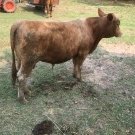Growing grass for hay
-
Recently Browsing 0 members
- No registered users viewing this page.
-
Topics
-
-
Popular Contributors
-
-
Latest posts...
-
756
Israel Hamas War the Widening Middle East Conflict
Israel has continued to launch waves of airstrikes in Gaza, hours after Hamas said it was ready to start talks “immediately” on a US-sponsored proposal for a 60-day ceasefire. The announcement by the militant Islamist organisation increased hopes that a deal may be done within days to pause the killing in Gaza and possibly end the near 21-month conflict. Saturday was relatively “calmer” after days of intense bombardment, aid officials and residents in Gaza said, although 24 Palestinians were killed, including 10 people seeking humanitarian aid, according to hospital officials. Israel continues airstrikes on Gaza after Hamas says it is ready for ceasefire talks -
45
SPOILER - JD Vance will win in 2028 and 2032
You mean like choking on a hamburger? -
49
Ukraine North Korea to Send Tens of Thousands More Troops to Aid Russia in Ukraine
You are of course right, but you're wasting your time. Some far out individuals won't acknowledge the truth if it hit them straight in the face. I have never seen any clearer Russian propaganda in my life. Russia is notoriously known for not allowing free speech, and they are arresting citizens for what we in the west think is absolutely nothing. Suggesting otherwise is just a joke. He can't be real, so yes, you will get a reply in that area. MSN propaganda. Although it's thousands of similar links over the decades. -
45
SPOILER - JD Vance will win in 2028 and 2032
Listening to Trump speak is so monotonous; like a broken record. -
2
-
-
-
Popular in The Pub







.thumb.jpeg.d2d19a66404642fd9ff62d6262fd153e.jpeg)

.thumb.jpg.3ee24d9400fb02605ea21bc13b1bf901.jpg)


Recommended Posts
Create an account or sign in to comment
You need to be a member in order to leave a comment
Create an account
Sign up for a new account in our community. It's easy!
Register a new accountSign in
Already have an account? Sign in here.
Sign In Now